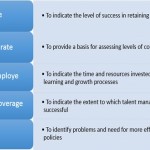KPIs for HR Shared Service Centers
An HR Shared Service’s role is to manage employee relations and provide a standardized customer services for personnel regardless of their location. For a better service delivery, large companies automate most of their processes. Moreover, integrating technology at a high level allows HR professionals to focus more on important tasks and allocate less time for transactional matters.
Automating processes provides yet another advantage – it enables easier tracking of performance data. More and more organizations turn to monitoring KPIs as they can provide insights and clarity in regards to how the business is doing by analyzing data. As there are a multitude of metrics that can be measured, it is important to concentrate only on the most relevant ones. KPIs should be able to reflect how the HR services are providing value for the company, not only by reflecting past performance, but also by offering a glance into the future, and signaling potential evolution. They should be linked to strategic objectives and supported by projects that must be implemented in order to improve performance.
Even if there is no such thing as the best list of KPIs to monitor, there are some common KPIs that most HR Shared Service Centers use to track their performance:
- % Employee turnover by type (voluntary / involuntary)
- # Headcount
- # Time to fill in a vacant position
- # Employee satisfaction or # Employee engagement index
- $ Training investment
- $ Recruitment costs
Besides monitoring the above mentioned KPIs, a Service Center is also tracking KPIs that reflect the quality and efficiency of customer services, such as:
- # Inquires received per day by type
- # Case handling time
- % Cases solved
- # Employee satisfaction with case management
- % Tier 1 resolution rate
- % Knowledge base utilization rate
However, the value of KPIs also depends on the person using the information, the format and timeliness of reporting. A CEO will require different data than a manager, but it won’t be of any help if the information doesn’t respect some basic data visualization rules or if it takes too long to produce it. Furthermore, the organization must nurture a performance culture, which ensures decisions are taken on performance data.
References:
- smartKPIs.com (2014), KPI examples, available at: http://www.smartkpis.com/kpi/functional-areas/human-resources/
Image source:

Tags: HR Shared Services, Human Resources performance, KPI






